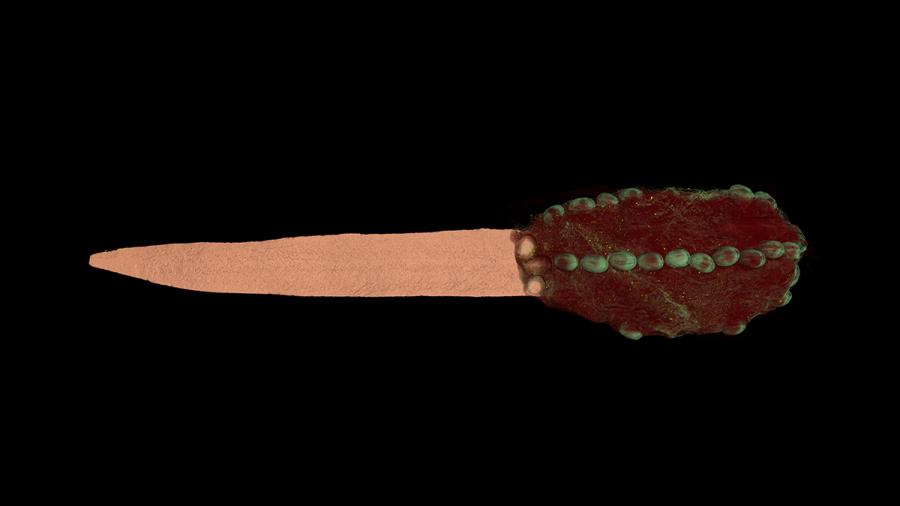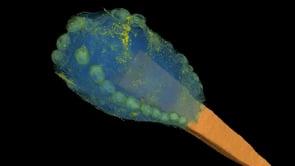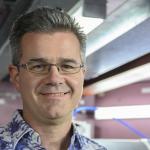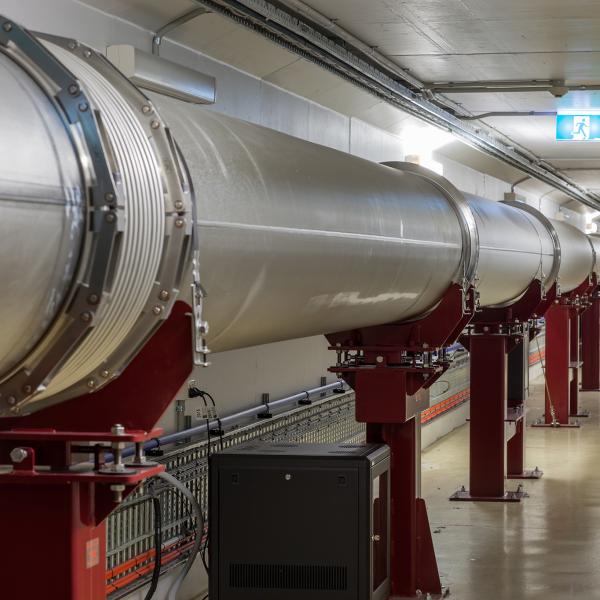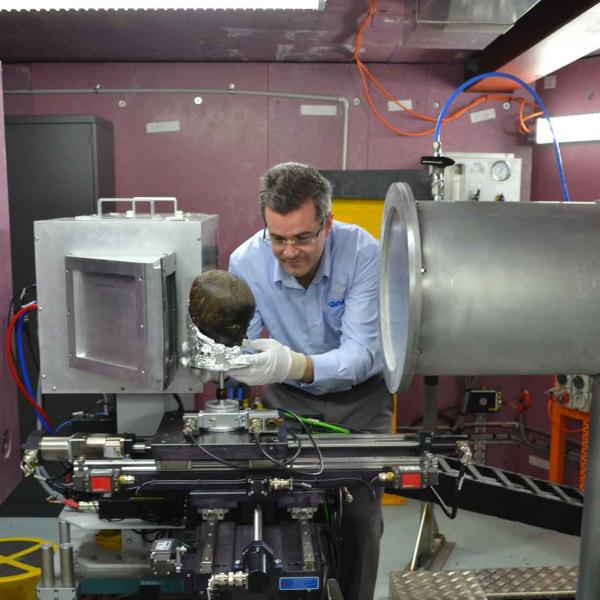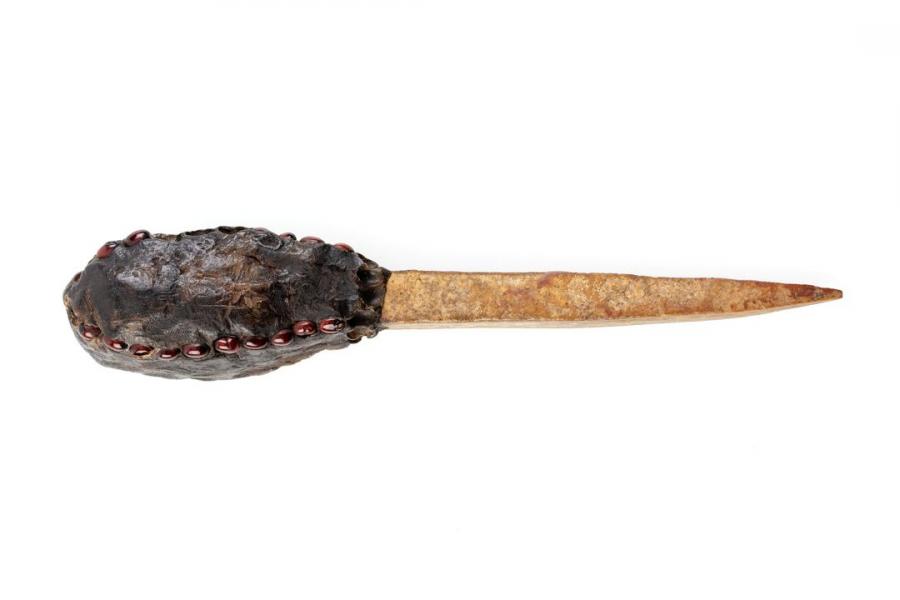
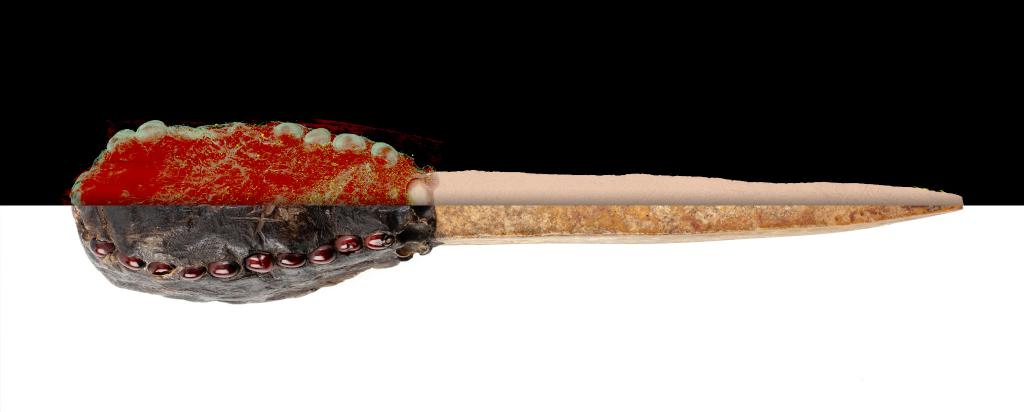
Published on the 3rd July 2023 by ANSTO Staff
ANSTO is committed to using its infrastructure and expertise to work with Aboriginal communities and organisations to confirm the great antiquity of Aboriginal cultural heritage and assist with their preservation.
A number of sophisticated non-invasive nuclear and accelerator techniques were used to provide information about the origin and age of an Australian Aboriginal knife held in the collection of the Powerhouse Museum.
The knife with a striking highly polished resin handle was selected to be part of a 26-object exhibition, The Invisible Revealed held at the Powerhouse during 2021-2022.
Prior to the exhibition, the Powerhouse Museum wanted to determine the materials used in the construction of the knife and handle.
Powerhouse Museum First Nations Collections Coordinator, Tammi Gissell, explained that because little was known about the origin or use of the blade, it had to be handled with caution and following cultural protocols.
For this reason, the object was sent in a closed box to senior instrument scientist Dr Joseph Bevitt.
“Essentially, we had to answer these questions without looking at the object. The object was sent to the Australian Synchrotron, where we used a 3D imaging technique, known as tomography, on the Imaging and Medical beamline (IMBL) to analyse it. The powerful X-ray can penetrate the box and the object to reveal important information about the materials,” explained Dr Bevitt.
The imaging was done by IMBL instrument scientist Dr Anton Maksimento and the data processed by Dr Bevitt.
“We could determine that the object was not made of metal but a very dense bone. Only two animals had bone that dense – the Australian cassowary and the water buffalo. As the museum told us it was found in northern Queensland, the source would have been the cassowary,” he added.
The next investigation used radiocarbon dating of the red Abrus seeds found on the handle.
Radiocarbon dates of the seeds from the Centre for Accelerator Science at ANSTO indicated that they were most likely to have been harvested between 1877 and 1930— which may indicate the knife’s time of production.
“The use of decorative seeds, Abrus precatorius, along with the generous amount of resin used in the construction of the handle indicates a potential for ceremonial significance,” said Ms Gissell.
“The knife, which was added to the collection in 1941 without provenance, is an example of First Nation Australian use of bone, and not stone as commonly found in Leilira knives.
“The casque has been carved into three faceted, triangular sections. Commonly used for hunting, leilira knives were also used as spearheads, “she said.
The museum believes the handle on the blade is most likely a resin created with a native plant in the region of Northern Queensland. ANSTO testing was unable to specifically identify the resin, however, it did confirm it was made of an organic material, possibly beeswax.
The artefact was displayed alongside 3D visualisations and other imagery that revealed the structural details of the 26 objects in the past exhibition, The Invisible Revealed.
The Powerhouse Museum houses an important collection of Aboriginal and Torres Strait Islander cultural materials.
https://collection.maas.museum/object/178101
_________________________________________________________________
Note: ANSTO thanks the First Nations Collections department at the Powerhouse Museum for assistance with this content as well as the permission to share information and an image of the Aboriginal knife.
